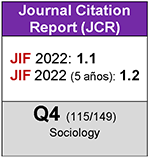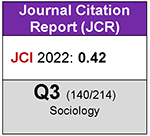Territorial Transition: Theoretical Model and Contrast with the Spanish Case
DOI:
https://doi.org/10.5477/cis/reis.139.133Keywords:
Internal Migration, Urban Concentration, Counterurbanization, Urban AreasAbstract
By analyzing all the fl ows of rural exodus, urban concentration and urban
deconcentration in a single comprehensive system, we can fi nd settlement
logics characteristic of each socioeconomic stage. This article
attempts to synthesize these patterns, which lead to changes of prominence
in territorial dynamics between different habitats and migratory
typologies that occur over time. We conceptualize the resulting model as
territorial transition. Although it has a theoretical link with important
precedents, it can be considered an original contribution, since it has not
previously been conceptualized in such detail. The narrative sequence
has two parts. It begins by presenting the basis, the theoretical background
and the stages of territorial transition, and continues by drawing a
contrast with the observed reality of the Spanish case, analyzing in detail
certain key specifi c features. In conclusion, we highlight that the formulation
of this model may allow the interpretation of apparently confusing or
confl icting phenomena of other international territorial systems.
Downloads
Downloads
Published
How to Cite
Issue
Section
License
Copyright (c) 2024 Revista Española de Investigaciones Sociológicas

This work is licensed under a Creative Commons Attribution-ShareAlike 4.0 International License.
Permite Compartir — copiar y redistribuir el material en cualquier medio o formato, Adaptar — remezclar, transformar y construir a partir del material para cualquier propósito, incluso comercialmente.








